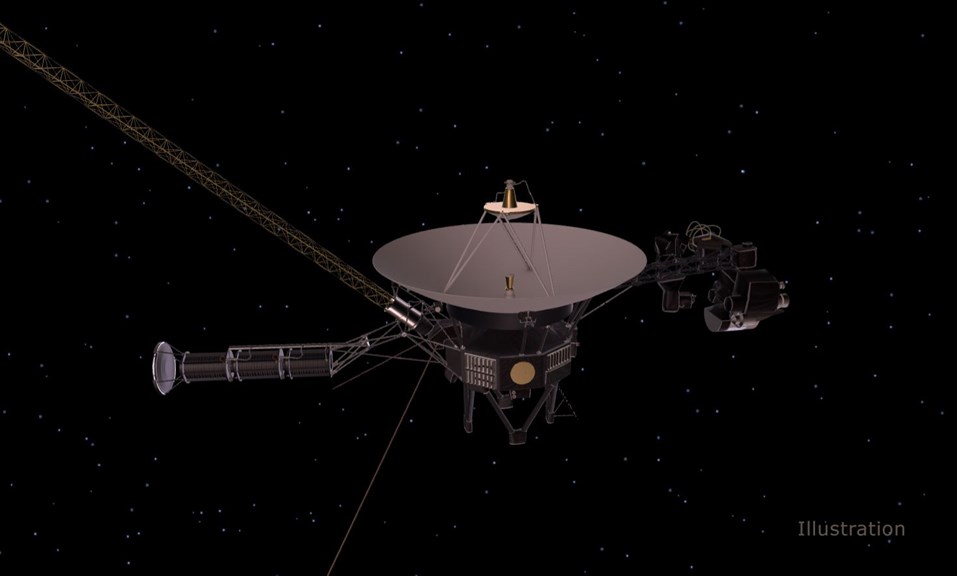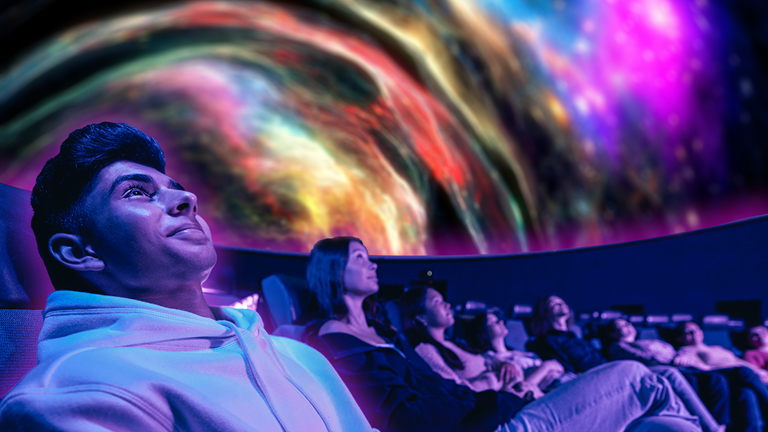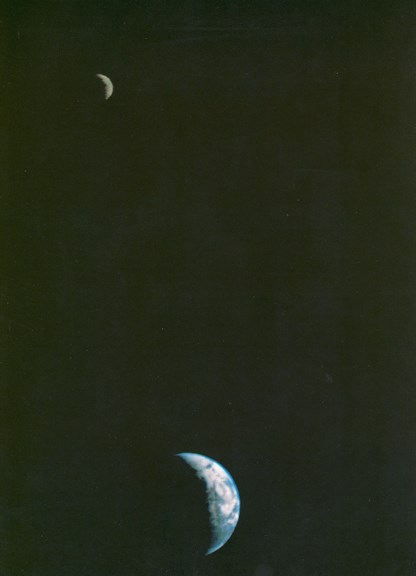Skynotes: September 2022
Upcoming events
Spring Equinox this month
Here in the southern hemisphere we are inexorably moving towards Spring Equinox or sometimes called Vernal Equinox from the Latin ver for spring-time, a period of new growth. From ancient Latin for ‘equal night’ this is when day and night are effectively the same length.
Globally, the equinox will be on Friday 23rd and marks the mid-year change of seasons – end of winter and beginning of spring in the southern hemisphere, and end of summer and start of autumn in the northern hemisphere. At equinoxes the sun shines directly on the equator and both hemispheres receive equal amounts of daylight.
The explanation for equinoxes and the main reason for the seasons lies in our planet’s titled axis of rotation which is effectively fixed at 23.5 degrees with respect to its orbit around the sun. This means that in spring and autumn neither hemisphere leans towards the sun.
During spring (or autumn) in mid-latitudes the sun’s rays strike the ground obliquely. This is very different to summer when the steep angle of rays gives greater energy per square metre, and the shallow one of winter which gives less energy. At these times the sun’s path in the sky is midway between summer when it is high and long with more hours of daylight, and winter when the path is low and short with fewer daylight hours.
However, the actual date of equal day and night for any given location is dependent on its latitude. For Melbourne’s latitude of 37.8 degrees south it will be September 20th, a couple of days earlier with sunrise at 6:13am and sunset at 6:14pm.
It is often said that day and night are equal at the equinox, but this is not quite so. The astronomical timings are based on exactly when and for how long the centre point of the Sun’s disc is above the horizon.
But the local day effectively starts when the ‘leading edge’ or limb of the Sun broaches the eastern horizon and ends when its ‘tailing edge’ or limb drops below the western horizon.
There is a counterintuitive terrestrial effect as well. The atmosphere refracts or bends light from the Sun so that at sunrise we get the first glimpse of the Sun before it physically crosses the horizon. The reverse occurs at sunset when we see the Sun for a few minutes after it has already sunk below the western horizon.
Explore
Melbourne Sun times
| Date | Rise | Set | Day length | Solar noon§ |
|---|---|---|---|---|
| Thursday 1st | 6:42 | 5:58 | 11:16 hrs | 12:20 |
| Sunday 11th | 6:27 | 6:07 | 11:39 hrs | 12:16 |
| Wednesday 21st | 6:11 | 6:15 | 12:03 hrs | 12:13 |
| Friday 30th | 5:57 | 6:23 | 12:25 hrs | 12:10 |
§ When the sun is at its highest, crossing the meridian or local longitude.
Moon phases
| Date | Phase |
|---|---|
| Sunday 4th | First Quarter |
| Saturday 10th | Full Moon |
| Sunday 18th | Third Quarter |
| Monday 26th | New Moon |
Moon distances
Thursday 8th is lunar perigee (nearest to Earth) at 364,492 km.
Tuesday 20th is lunar apogee (furthest from Earth) at 404,556 km.
Voyager 1 captures Earth and Moon
For a true scale of the Earth-Moon system see April 2022 Skynotes - Our receding Moon and slowing Earth.

To commemorate Voyager 1's launch in September 1977, and that of its twin co-explorer Voyager 2 that launched 16 days earlier, and the amazing ongoing mission that continues after 45 years, enjoy these sites:
Planets
Mercury is too close to the Sun this month as it approaches inferior solar conjunction when it will be directly in front of the sun from our vantage point on Earth. See conjunctions, oppositions and many other topics in the Swinburne Astronomy Online Encyclopedia COSMOS.
Venus is now lost in morning light and is about to pass behind the sun. Once its passage behind the sun has ended Venus will reappear in January in the west as the ‘evening star’.
Mars is going to be very easy to spot this month, breaching the horizon at 1am, and getting high enough to be seen at around 2am, it will be quite bright and easily spotted until it progressively fades with the dawn light. The Red Planet is a beautiful sight, and especially its polar caps which may be revealed with a larger telescope.
Jupiter is going to be in opposition towards the end of this month, and will be easily spotted in the suburban sky from just before 9pm to around 6am when the light of the morning slowly extinguishes its light, taking slightly longer to do so than Mars, as it is the thi brightest object in the entire night sky. If you are viewing it through a telescope, you will more than likely see one or two of the four Galilean moons, named after the famous astronomer Galileo Galilei, the moons’ discoverer.
Saturn will be approaching opposition early this month, about two weeks before Jupiter and will be at its brightest during this time. It is already above the horizon by the late afternoon but only becomes visible as dusk sets in and the sky darkens, revealing the most beautiful planet of our solar system, whose rings will set your eyes alight should you get a chance to view it through a telescope. It will set in the sky at around 5am, just before dawn would cause it to be lost to the day.
Uranus is a bit harder to spot than the three aforementioned planets, being quite a lot duller than them all. It rises around 2am, but is quite low in the sky all night and as such might be hard to spot even in a large and open parkland. It is lost quite early to the morning light, just after 5am, but would be too low in most places to be seen at that time anyway. Under dark skies and with binoculars or a modest telescope it is an excellent challenge for night time skygazers.
Neptune, the beautiful deep Blue planet will rise from about 9pm, reaching its highest point in the sky for the night at a quarter past one in the morning. Its deep blue colours will not be visible to the naked eye, or most telescopes even, but it is still a fascinating planet and well worth a look if you can. It is also lost to the early twilight much the same as Uranus.
Meteors
While not a good time for meteors this month the Southern Piscids will peak from 11th to the 20th. They usually number only a few per hour and appear in the constellation of Pisces, the fish, which rises in the north-west from midnight.
Find out more about these space visitors at NASA Asteroids, Comets and Meteors
Stars and constellations
In the north
High in the north are Sagittarius (the archer centaur). Its bow and arrow forms the famous asterism The Teapot, the spout of which leads across the zenith to the curving tail of nearby Scorpius.
Lower in the north sits Aquila (the eagle) with Altair or Alpha Aquilae, the 12th brightest star at night. And quite low in the north is Lyre (the lyre) and its principal star Vega or Alpha Lyrae which is the 5th brightest star at night.
In the east
Directly east this month is a trio of adjacent constellations. In the centre is Aquarius, the water bearer while above is Capricornus (the goat), to its left sits Pisces Austrinus (Southern Fish) containing its main star and the 18th brightest star at night, Formalhaut (Alpha Piscis Austrinus).
In the south
Low in the south-west can easily be seen two of the brightest stars in the night sky, Alpha and Beta Centauri. These are the two brightest stars in the constellation of Centaurus (the centaur) with Alpha Centauri also known as Rigel Kentaurus (foot of the centaur). Together these two stars are referred to as The Pointers as they lead directly to the unmistakable diamond shape of Crux or Southern Cross. Crux is the smallest of the traditional 88 constellations astronomer use and is an easy feature of the night sky to observe, even in city surroundings.
In the south-east is the 10th brightest star, Achernar in the long constellation Eridanis (the river) that winds its way down to the horizon.
In the west
High in the west sits the curving tail, body and pincers of the scorpion, Scorpius. Within its body you should see red giant star Antares which will appear more orange than red in light polluted skies. In front of the Scorpion’s wide head and closer to the horizon sits Libra (the scales).
International Space Station
At a distance of about 400km the ISS completes an orbit every 90 minutes and appears as a bright point slowly moving across the night sky. Here are some of the brightest passes expected this month over Melbourne:
Morning
Thursday 22nd 5:04am-5:09am North-West to South-East
Sunday 25th 5:04am-5:09am North-West to South-East
Evening
Monday 5th 6.57pm-7.03pm South-West to North-East
Heavens Above gives predictions for visible passes of space stations and major satellites, live sky views and 3D visualisations. Be sure to first enter your location under ‘Configuration’.
On this day
1st 1939, Americans J Robert Oppenheimer and Hartland Snyder publish the first paper that describes the gravitational contraction of a star which later led to the modern concept of black holes.
1st 1859, Carrington Event, most powerful geomagnetic storm ever recorded. Now understood as a Coronal Mass Ejection (CME) from the Sun that hit Earth’s magnetosphere inducing strong northern auroras almost to the equator, and telegraph interference in Europe and North America with operators receiving electric shocks, poles sparking, and signals sent despite power cut off.
1st 1979, Pioneer 11 (USA) made the first flyby of Saturn returning the first close-up images of the planet. It was the second probe to pass the asteroid belt and Jupiter and to reach solar escape velocity. Last routine contact was on 30 September 1995 and final data received was on November 1995.
5th 1977, Voyager 1 (USA) is launched to explore the outer Solar System. After 42 years it continues sending data and is the most distant probe at 21.8 billion km (146 AU). It entered interstellar space in 2012 and its power supply may last until 2025.
8th 2004, Genesis (USA) probe crashes in Utah while returning samples of solar wind particles. Some collecting panels survived impact and were recovered giving successful scientific results.
11th 1985, the International Cometary Explorer or ICE (USA) became the first spacecraft to encounter a comet by flying through the dust tail of Comet Giacobini-Zinner.
14th 1959, Luna 2 (USSR) was the first craft to fly to and impact another body, in this case the Moon. It released sodium gas to allow visible tracking, used radio for telemetry transmission, and crashed into Mare Imbrium (the Sea of Rains).
17th 1976, NASA unveils its concept for a Space Transportation System, a rocket launched and glider return orbiter known as the Space Shuttle.
17th 1857, birth of Konstantin Tsiolkovsky, a pioneering Russian then Soviet teacher whose theoretical work on aerodynamics and rocketry influenced all who followed. He advocated spaceflight and believed humans would colonise the galaxy.
18th 1977, Voyager 1 (USA) sends the first image of Earth and Moon together taken, from a distance of 11.6 million km while on its way to Jupiter.
21st 1633, the Roman Catholic Inquisition begins its trial of Galileo for heresy in publishing and advocating a heliocentric or Sun-centred solar system contrary to church doctrine, dogma and scripture.
23rd 1846, Neptune, first predicted by Urbain Le Verrier (France), is discovered by Johanne Gottfried Galle (Germany) with John Couch Adams (UK) recognised for an independent discovery.
27th 1905, Albert Einstein published his paper containing the famous equation E=mc2 (energy equals mass multiplied by the speed of light squared), meaning a small amount of matter is equivalent to, or can be converted into, a great deal of energy.

